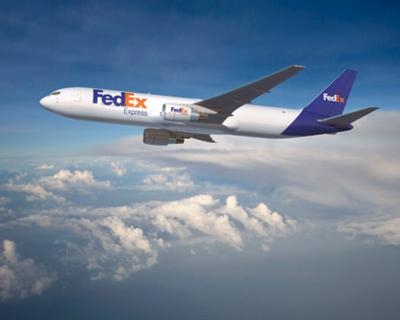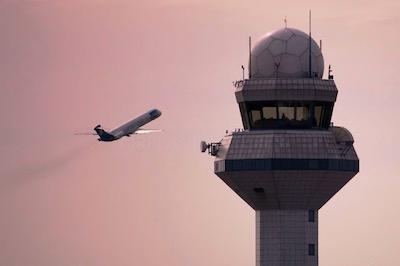Hindsight’s Clarity
On the morning of 04 February 2023, the three-man crew of FDX1432, a FedEx 767 freighter inbound on the ILS approach to runway 18L at Texas’s Austin-Bergstrom International Airport (AUS), broke out of dense fog and was confronted with the sight of a 737-700 then operating as Southwest Airlines Flight 708 commencing its take-off roll on the selfsame runway.

At the time, prevailing AUS weather conditions consisted of calm winds and one-quarter-mile visibility in freezing fog.
At an altitude of approximately 150-feet AGL, FDX1432—initiated a go-around.
Boeing’s 767, alas, is a portly critter boasting a 58-ton payload and a maximum landing weight of 320,000-pounds. Simply stated, the machine neither rolls like an Extra 330SC nor climbs like an F-15A Streak Eagle. Ergo, expediently departing the flight-path of a climbing 737-700 was a tall-order for the FedEx crew.
Sensing oblivion’s imminence, one of the FedEx pilots commandeered the AUS tower frequency and urgently transmitted: “Southwest, abort!”
In its preliminary report on the incident, the NTSB set forth: “The [Austin Airport Air Traffic Control Tower Air Traffic Manager] reported an overflight appeared to have occurred; however, the closest proximity has not yet been determined …”
Southwest Airlines Flight 708 and the 128 souls on board continued uneventfully on course, arriving in Cancún some hours later—the entirety of the flight’s passengers unaware they’d nearly traded paint with Death’s specter come riding down the AUS glideslope.
For its own part, FedEx 1432 executed a go-around and returned for a normal landing on AUS runway 18L.”
NTSB investigators subsequently determined the two aircraft had passed within fifty-feet of each other.
In a year chock-full of near-misses, runway-incursions, and generally lackluster air traffic control, the Austin-Bergstrom incident most unnerved the FAA’s Oklahoma City brass. Disaster had only narrowly been averted, and the U.S. ATC system—broadly lauded as the world’s best—had been soundly supplanted by dumb luck.
As 2023 lurches into autumn and February’s horrors recede into the obscurity of America’s woefully-short national memory, formerly undisclosed facts germane to the Austin-Bergstrom near-miss have quietly come to light—facts at once worrisome, damning, and irksomely understandable.

For years, AUS has functioned despite a paucity of qualified air traffic controllers. Even as aircraft operations at the airport surged to record numbers, nearly three-quarters of the shifts at Austin Bergstrom TRACON and the AUS VFR control tower remained understaffed. Managers and rank-and-file controllers alike repeatedly warned their superiors that the facilities’ miserly staffing levels posed a genuine threat to public safety. Damin Campbell, 43, the air traffic controller upon whose shoulders the NTSB has heaped the lion’s share of the blame for the FDX1432—SWA708 near-tragedy was, in fact, working an overtime shift.
In June, a representative of the Central Texas chapter of the National Air Traffic Controllers Association and Stephen B. Martin, then the manager of AUS’s air traffic controller cadre, co-authored a memo beseeching the FAA to hire more controllers and deploy them straight-away to Austin. “Drastic steps are needed to allow the facility to adequately staff for existing traffic,” the pair advised FAA and union officials.
Speaking to the subject of the Austin-Bergstrom near-miss, FAA spokesman Matthew Lehner stated: “The close call in Austin should have never happened. The FAA immediately took a hard look and required training to reinforce current procedures at the facility.”
NTSB chair Jennifer Homendy described the incident as a nearly “disastrous collision,” adding, “ … as close as that was, it’s just one of seven serious close calls and near misses involving commercial airlines that we have initiated investigations on this year.”
Saturday, 04 February 2023 was to have been a day off for Damien Campbell. He was asked to work, however, and reported for duty at approximately 05:45 CST—long before sunrise.
Campbell was tasked, that morning, with overseeing arrivals and departures. At the time of the FDX1432-SWA708 conflict, he and a supervisor working ground-control were the only occupants of the AUS VFR control tower.
As the morning was characterized by thick fog and severely-restricted visibility, Campbell was unable to clearly observe aircraft movements in the vicinity of the control tower. What’s more, AUS lacks Airport Surface Detection Equipment, Model X (ASDE-X)—a surveillance system comprising radar, multilateration, and satellite technology that allows air traffic controllers to track surface movement of aircraft and vehicles. Ergo, Campbell’s understanding of the positions of the aircraft under his control was predicated solely upon pilot position reports.

At approximately 06:34 CST, FDX1432—inbound from Memphis International Airport (MAM)—checked in on frequency some 16-nautical-miles north of the airport.
“One Eight Left cleared to land,” Campbell transmitted, adding visibility was extremely low.
Approximately four-minutes later, Campbell cleared SWA708 for take-off on runway 18L. FDX1432, at the time, was only 2.6-nautical-miles north of the Runway 18L threshold.
The average Vref of a heavily loaded 767-freighter is 145-knots. Viewed through the lens of simple mathematics, FDX1432 was 65-seconds from touchdown at the time Campbell cleared SWA708 to take the runway.
An additional 43-seconds passed as the Southwest Airlines flight-crew taxied the 737 into position and completed the line-up checklist. Alerted by Campbell’s radio transmission that SWA708 was on the runway, one of the FedEx pilots requested confirmation that FDX1432 remained cleared to land.
“That is affirmative,” Campbell responded. “You are cleared to land.”
Catching sight of Runway 18L and the Southwest 737 directly in their flightpath, the crew of FDX1432 undertook an heroic act of airmanship, managing—just—to save 131 lives, including their own.
Notwithstanding the emergency’s aversion, confusion persisted in the AUS control tower.
Campbell, having heard a radio transmission calling for an aborted take-off, incorrectly inferred the flight-crew of SWA708 had declared its intention to discontinue the 737’s take-off roll.
“Roger,” Campbell transmitted, “you can turn right when able.”

“Negative,” one of the SWA708 pilots responded as their aircraft climbed into the foggy morning.
Minutes later, FDX1432 landed without further incident.
“You have our apologies,” Campbell radioed the FedEx flight-crew. “We appreciate your professionalism.”
Campbell, who was ordered to undergo remedial training, spent the subsequent weeks working a desk job. He’s since returned to the AUS tower, but remains constrained to ground-control duties.
While the business of heaping blame for the FDX1432-SWA708 incident on a single air traffic controller is expedient, it’s eminently unjust. After the fashion of nearly all aviation accidents and incidents, the now infamous 04 February 2023 near-miss instantiated the culmination of a complex sequence of circumstantial, systemic, and individual missteps. Campell, who at the very least was overworked, underequipped, and virtually unsupported, was merely the last integer in the tortuous equation that very nearly yielded disaster as its product.
In their professional capacities, pilots and air traffic controllers are called upon to make critical, time-sensitive decisions based on imperfect data. Damien Campbell’s decisions, though imperfect, are defensible.

NTSB investigators do not concern themselves with the nebulous periphery of commercial aircraft operations—e.g., the fragility of flight schedules and the immense monetary burdens imposed upon air-carriers by inconveniences the likes holding patterns, aborted approaches, and go-arounds. By way of example, a cruising 767-300 burns 13,228-pounds (1,945-gallons) of jet fuel per hour. The amount of fuel FDX1432 expended during its aborted approach and go-around represented a dollar-figure (based on the current $6.23/gallon U.S. average cost of jet fuel) of approximately $2,804.
In light of the immense sums of money, time, effort, and logistics in play, air traffic controllers are under constant and continuous tacit pressure to maintain orderly and efficient traffic flow through their respective sectors and to and from the airports they man. Those quick to impugn Damien Campbell would do well to spend an hour or two in the crucible of strips and blips within which he—and the larger part of America’s 14,000 air traffic controllers—pass entire careers.
Let him without TCAS alert cast the first disparaging remark.
 Airborne 05.10.24: Icon Auction, Drunk MedEvac Pilot, Bell ALFA
Airborne 05.10.24: Icon Auction, Drunk MedEvac Pilot, Bell ALFA ANN's Daily Aero-Term (05.13.24): ILS PRM Approach
ANN's Daily Aero-Term (05.13.24): ILS PRM Approach ANN's Daily Aero-Linx (05.13.24)
ANN's Daily Aero-Linx (05.13.24) Airborne-NextGen 05.07.24: AI-Piloted F-16, AgEagle, 1st 2 WorldView Sats
Airborne-NextGen 05.07.24: AI-Piloted F-16, AgEagle, 1st 2 WorldView Sats Airborne 05.08.24: Denali Update, Dad-Daughter Gyro, Lake SAIB
Airborne 05.08.24: Denali Update, Dad-Daughter Gyro, Lake SAIB







